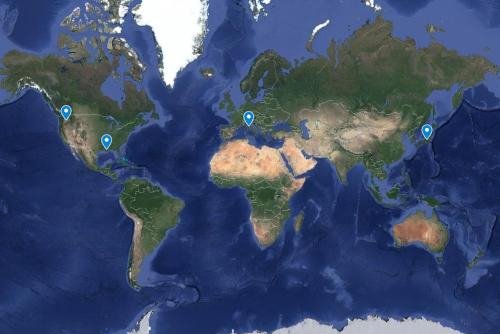
Virgo, LIGO and KAGRA sign agreement to begin joint observation
The world's three principal gravitational-wave detectors - LIGO in the US, Virgo in Italy, and now KAGRA in Japan - have today, the 4th of October, 2019, signed a memorandum of agreement (MoA) that covers scientific collaboration. The agreement includes the joint observation of gravitational waves and the sharing of data over the coming years, while it also foresees the expansion of the collaboration through the welcoming of new partners in the future.
"With KAGRA joining, gravitational-wave science will become a global collaborative effort. The Virgo Collaboration looks forward to learning from the new and innovative approach of using an underground and cryogenic interferometer", says Jo van den Brand, Virgo Collaboration Spokesperson. KAGRA is a gravitational wave observatory developed in Kamioka, Japan under the leadership of the University of Tokyo Institute for Cosmic Ray Research (ICRR). Construction started in 2010 and the highly-sensitive instrument is now nearing readiness.
In December of this year, KAGRA is expected to join the third observing run, called O3, which began on the 1st of April, 2019, and already involves the VIRGO detector and the two LIGO detectors. The addition of a fourth detector to the global network of gravitational-wave interferometers will help to improve the localisation of gravitational-wave sources, further assisting follow-up astronomical observations and the process of understanding the characteristics of the signals.
The main distinguishing feature of KAGRA, with respect to Virgo and LIGO, is the fact that the mirrors are operated at cryogenic temperatures, in order to reduce thermal noise. The detector is installed underground in the Kamioka mine, which helps in the overcoming of seismic and wind noise. The cryogenics and underground-operation technologies are a significant development in the gravitational-wave field, as they are also being studied for the next-generation gravitational-wave detectors, such as the European Einstein Telescope.

Image credit: LIGO/Virgo/KAGRA.
